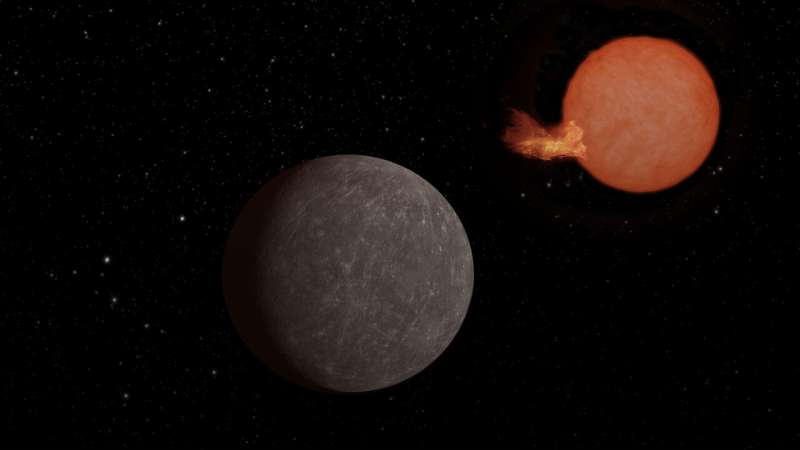Description

Copyright infringement not intended
Picture Courtesy: https://phys.org/news/2024-05-astronomers-earth-sized-world-orbiting.html#google_vignette
Context: The discovery of SPECULOOS-3 b, an Earth-sized exoplanet orbiting an ultra-cool red dwarf star, represents a significant achievement in the field of astronomy.
Discovery and Characteristics
- SPECULOOS-3 b: This newly discovered exoplanet is approximately the size of Earth and orbits an ultra-cool red dwarf star. It is only the second Earth-sized planet found around this type of star.
- Orbital Characteristics: SPECULOOS-3 b completes one orbit around its host star in approximately 17 hours, indicating its proximity to the star.
- Host Star Properties: The host star is more than twice as cold as our sun, significantly less massive, and emits far less light. Days and nights on SPECULOOS-3 b are likely to be endless due to tidal locking, with one side always facing the star.
Discovery Methodology
- SPECULOOS Project: The discovery was made by the SPECULOOS project, which utilizes a network of robotic telescopes situated around the world. This project aims to search for exoplanets orbiting ultra-cool dwarf stars.
- Observational Technique: Astronomers employed transit photometry, a technique that involves monitoring the brightness of stars over time. The slight dimming of starlight caused by a planet passing in front of its host star (transit) provides evidence of the planet's existence.
- Data Analysis: While most astronomical data is automatically analysed by algorithms, in this case, members of the SPECULOOS team manually inspect the data. Dr Georgina Dransfield played a crucial role in identifying the planetary signal and alerting the collaboration.

Significance and Implications
- Commonality of Ultra-Cool Dwarf Stars: Ultra-cool dwarf stars are prevalent in the Milky Way, comprising around 70% of all stars. Discovering planets around these stars expands our understanding of planetary systems in the galaxy.
- Habitability: The long lifespan of ultra-cool dwarf stars, estimated to be around 100 billion years, raises the possibility of habitable conditions on orbiting planets. Future observations, possibly by the James Webb Space Telescope (JWST), could provide insights into the planet's surface mineralogy and atmosphere, furthering our understanding of its potential habitability.
Conclusion
- The discovery of SPECULOOS-3 b represents a significant advancement in exoplanet research, offering valuable insights into the prevalence of Earth-sized planets orbiting ultra-cool dwarf stars and their potential for habitability. Further studies of this exoplanet hold promise for expanding our knowledge of planetary systems in the universe.
Source
phys
|
PRACTICE QUESTION
Q. What is the SPECULOOS project, frequently seen in the news?
A) A project aimed at studying the behaviour of black holes in space.
B) A project focused on discovering exoplanets orbiting ultra-cool dwarf stars.
C) A project dedicated to exploring the atmospheres of gas giants in our solar system.
D) A project aimed at studying the formation of galaxies in the early universe.
Answer: B
|













